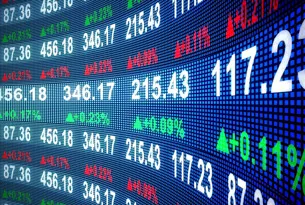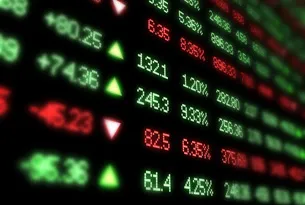The rush is on to find safe, solid yields that are also kicking off more than the annual inflation rate…and there are still some good bargains, writes Benjamin Shepherd of Personal Finance.
With interest rates at rock-bottom levels and equity markets enduring severe fluctuations, low-volatility income streams are scarce. Consequently, investors have resorted to unconventional income investments to boost their yields, especially in the realm of exchange traded products (ETPs).
Consider the popularity of UBS E-TRACS 2X Wells Fargo Business Development Company (BDCL), a leveraged exchange traded note that delivers twice the monthly performance of the Wells Fargo Business Development Company Index. (This index tracks a basket of 26 business development companies (BDC), publicly traded private-equity firms that invest in or lend to start-ups or small companies.)
Investing in BDCs is a dicey proposition in the current economic environment, but UBS E-TRACS 2X Wells Fargo Business Development Company’s trading volume has surged since it launched in April. In fact, the ETN’s volume is seven times that of the unlevered UBS E-TRACS Wells Fargo Business Development Company (BDCS).
Although there’s an investment case for BDCs, these are speculative plays even before leverage enters the equation. In these fraught times, why would investors purchase levered shares of a fund that holds positions in companies with unpredictable earnings? The allure of a 20% yield is too difficult to resist.
The interest in high-yielding ETPs is understandable; these instruments generally offer broad diversification at a low cost. But like every investment, these ETPs entail risk. And these risks are magnified when a fund employs leverage.
A number of ETPs offer attractive yields with acceptable levels of risk—though investors should resign themselves to yields that are less than 20%.
SPDR S&P International Dividend (DWX)
This ETF currently yields 7.4%, largely because of its broad exposure to Europe. About 58% of its $554 million in assets are devoted to the region.
Investing in European equities may seem ill-advised given the Continent’s ongoing sovereign-debt crisis. But Europe’s policymakers have already begun to take actions to right the region’s economic ship. Furthermore, SPDR S&P International Dividend’s focus on quality names provides investors with a measure of security.
Although the fund tracks 100 of the highest yielding common stocks in its coverage universe, it doesn’t blindly invest in the companies with the highest yields. Portfolio companies must have a market cap greater than $1.5 billion and positive earnings growth over the trailing five-year period. The shares of these companies must also be extremely liquid.
The economic turmoil of the past few years has narrowed the fund’s European exposure to defensive sectors such as utilities and consumer staples.
Although the fund currently allocates 10.8% of its assets to the financial sector, Asian and Australian names account for the bulk of that exposure. European financial stocks represent only 0.7% of the ETF’s portfolio.
The ETF is slightly more volatile than the S&P 500. But we believe Europe will stabilize eventually, which justifies the fund’s slightly elevated risk. With an expense ratio of 0.45%, SPDR S&P International Dividend is a buy up to $51. [Shares opened Wednesday around $48—Editor.]
IShares S&P US Preferred Stock Index (PFF)
Preferred shares fall squarely in the middle of the risk spectrum; senior to common stockholders, preferred-stock holders are paid out after bondholders. Preferred shares don’t offer the same potential for capital appreciation as common stock, but they currently offer superior yields to many bonds.
PFF holds a basket of about 240 preferred issues. The ETF’s 7.4% yield is superior to the yield offered by the typical junk-bond fund. With a beta of 0.88, the fund is also less volatile than the S&P 500—a welcome respite from the wild swings in equity prices.
Financial-services firms have long accounted for the lion’s share of publicly traded preferred stock. Designed to track an index that represents the universe of preferred shares, the fund allocates 80% of its assets to the financial sector—a major turnoff for many investors.
But the outlook for US financial institutions has improved markedly. Most US banks have returned to profitability, toxic assets continue to be worked out of loan books and capitalization ratios remain healthy.
Investors are also wary of iShares S&P US Preferred Stock Index’s exposure to the US-based subsidiaries of European banks. HSBC Holdings (HBC) and Deutsche Bank (DB) account for the bulk of the fund’s exposure. Although neither institution would be unscathed by a European sovereign default, both banks’ elevated capital levels should limit their need to raise additional funds.
This ETF’s exposure to the financial sector is cause for concern, but the risks are acceptable so long as you hold the fund as part of a well-rounded portfolio. IShares S&P US Preferred Stock Index rates a buy under $40. [Shares went for $36 at the opening bell on Wednesday—Editor.]
Subscribe to Personal Finance here…
Related Reading:




































